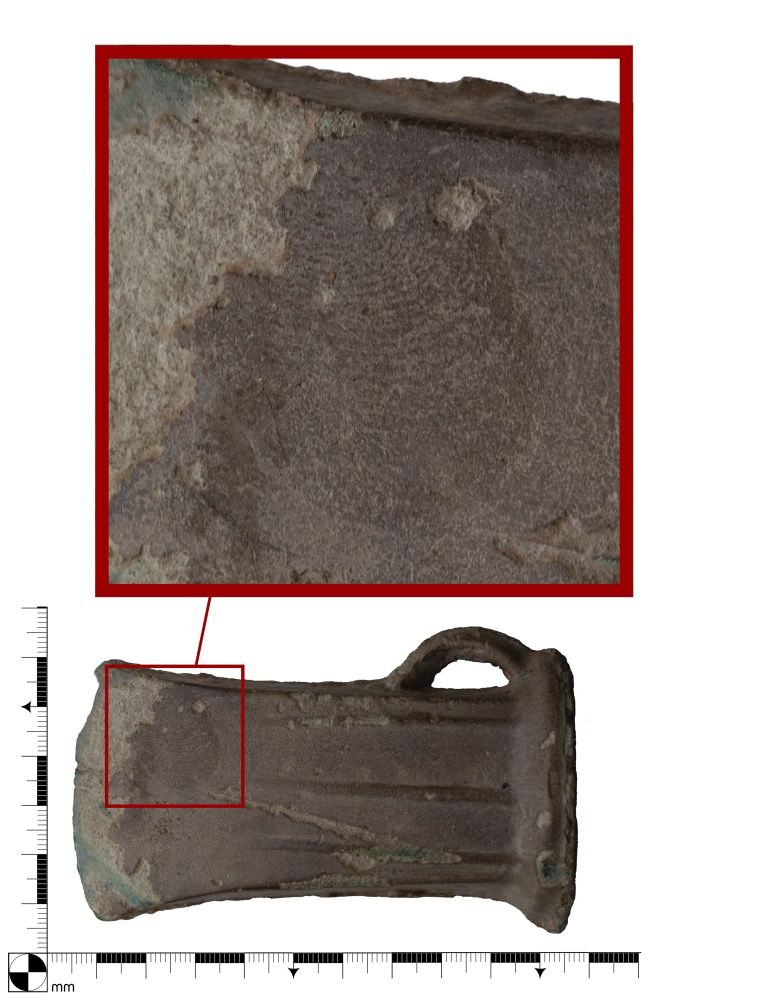
Find me at: https://www.ancientcraft.co.uk/
A seasonal cycle of moving to different campsites to utilise food sources changed to working the land. Neolithic farmers appear to have genetically dominated the smaller hunter-gatherer groups within a short period of time. 🏺🦣🧪


A seasonal cycle of moving to different campsites to utilise food sources changed to working the land. Neolithic farmers appear to have genetically dominated the smaller hunter-gatherer groups within a short period of time. 🏺🦣🧪
A flake of stone would be trimmed, then have hundreds of tiny flakes detached using an antler point. The knapper would put pressure on the flaker tool from their abdomen while the flake was braced again a leg.
🎥 @emlouwynjones.bsky.social
A flake of stone would be trimmed, then have hundreds of tiny flakes detached using an antler point. The knapper would put pressure on the flaker tool from their abdomen while the flake was braced again a leg.
🎥 @emlouwynjones.bsky.social

This week I found a flint handaxe at Happisburgh while walking with friends. Their shared concern was due to my delighted dancing looking like I was having a funny turn!
This week I found a flint handaxe at Happisburgh while walking with friends. Their shared concern was due to my delighted dancing looking like I was having a funny turn!
We’ve been busy making lots of replica prehistoric goodies for Christmas presents. But a couple found themselves on a plane with @profaliceroberts.bsky.social heading to Australia for her Cells to Civilisation tour!
Here’s one of Palaeolithic handaxes being made:
🏺 🦣 🧪
We’ve been busy making lots of replica prehistoric goodies for Christmas presents. But a couple found themselves on a plane with @profaliceroberts.bsky.social heading to Australia for her Cells to Civilisation tour!
Here’s one of Palaeolithic handaxes being made:
🏺 🦣 🧪


A small Cist-in-Circle tomb
The remains of 20 people were interred in this little chamber of pink & grey granite during the Chalcolithic. Built amidst coastal woodland before sand dunes inundated it.
@jerseyheritage.bsky.social
#TombTuesday
#AncientSky 🏺

A small Cist-in-Circle tomb
The remains of 20 people were interred in this little chamber of pink & grey granite during the Chalcolithic. Built amidst coastal woodland before sand dunes inundated it.
@jerseyheritage.bsky.social
#TombTuesday
#AncientSky 🏺
There are a few, but can you guess what this is?
Art group Troika asked me to make flint handaxes which would be fitted to silicon wafer boards as part of several art installations including "Pink Noise" at the Langen Foundation...
📷 @emlouwynjones.bsky.social


There are a few, but can you guess what this is?
Art group Troika asked me to make flint handaxes which would be fitted to silicon wafer boards as part of several art installations including "Pink Noise" at the Langen Foundation...
📷 @emlouwynjones.bsky.social

go.bsky.app/R1ejt58
go.bsky.app/R1ejt58
A few years ago @emlouwynjones.bsky.social and I made a film for Kings Lynn museum showing the heating, casting and finishing involved in making the kind of axes used to make Seahenge.
Here is a shortened version:
A few years ago @emlouwynjones.bsky.social and I made a film for Kings Lynn museum showing the heating, casting and finishing involved in making the kind of axes used to make Seahenge.
Here is a shortened version:
One of the weirder materials I’ve knapped was refined silicon from an ingot that are typically used for microchips. Though it flakes, it’s quite unlike flint or glass, but can be used to make a Palaeolithic handaxe!

One of the weirder materials I’ve knapped was refined silicon from an ingot that are typically used for microchips. Though it flakes, it’s quite unlike flint or glass, but can be used to make a Palaeolithic handaxe!
While I was working on this flint I discovered this little fellow who had been trapped in flint for 90 million years. Fossils like this can make flintknapping tricky as they can divert or stop the plane of fracture which forms a flake. But what did I make in the end?
While I was working on this flint I discovered this little fellow who had been trapped in flint for 90 million years. Fossils like this can make flintknapping tricky as they can divert or stop the plane of fracture which forms a flake. But what did I make in the end?
A human fingerprint. A real, visible and tangible connection to someone from 3000 years ago. If that doesn’t give you goosebumps, idk what will. 🥹
#FindsFriday
Link to record: finds.org.uk/database/art...


They were made & used by several different hominin species in the Palaeolithic from just under 2 million years ago up until the last Neanderthal ~ 40,000 yrs ago.
I make these for our prehistoric replicas shop (link in bio)
🎥 @emmalouwynjones.bsky.social
They were made & used by several different hominin species in the Palaeolithic from just under 2 million years ago up until the last Neanderthal ~ 40,000 yrs ago.
I make these for our prehistoric replicas shop (link in bio)
🎥 @emmalouwynjones.bsky.social
3300-3125 years ago, these spears would have been the primary weapon of a warrior while swords were still developing. They were effective for slashing & thrusting.
www.ancientcraft.co.uk/product-page...
🎥 @emmalouwynjones.bsky.social
3300-3125 years ago, these spears would have been the primary weapon of a warrior while swords were still developing. They were effective for slashing & thrusting.
www.ancientcraft.co.uk/product-page...
🎥 @emmalouwynjones.bsky.social
A tool that changed the British landscape above and below ground was the Neolithic axe. From around 6000 years ago they were produced in huge to fell the Mesolithic forest.
www.ancientcraft.co.uk/product-page...
📸: @emmalouwynjones.bsky.social

A tool that changed the British landscape above and below ground was the Neolithic axe. From around 6000 years ago they were produced in huge to fell the Mesolithic forest.
www.ancientcraft.co.uk/product-page...
📸: @emmalouwynjones.bsky.social



